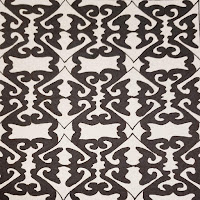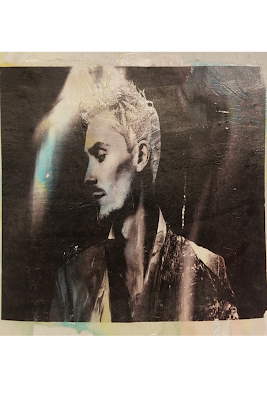Printing Processes and Techniques
Relief Printing
Relief printing was originally for hand pressing, rather than using an actual press. To do the process you would lay a piece of paper over a wood block, in which has an image with ink in cut sections. Beginning to make the block involves painting over it with a light black ink. After, you would lay a template down to draw the outline of the design desired. When carving the wood block itself, various white and black lines would be used to add or remove detail or additional texture to the image for when it transfers over to paper. After carving is completed, an ink roller goes over the block to prepare for pressing the paper. Linoleum cutting is similar to that of wood cutting, except removed material has a white finish, and anything that was left untouched remains black. Any tool that may remove the surface for either method will work for when you print, but blocks must be made backwards in terms of detailing to have a project that makes visual sense.
 Intaglio Process
Intaglio Process
The image in this process is below the plate of surface when printing. Dry point is direct scratching to the metal that creates characteristic lines. Various tools add different textures to the final image, such as a roulette that adds dots to to the surface. Steel facing the metal increases the structural integrity of the metal itself, especially when using a fragile method such as dry point. Etching is different form dry point in that you polish and clean the template to provide a clear work area. A ground is then applied to the plate, and protects the copper surface of the plate. Then the plate is held upside down and fire is placed under it so soot may be absorbed into it. A tool then removes the soot from the surface for the copper to be "eaten away", and small areas are developed for the ink to settle in. This is done by placing the template into acid for fifteen minutes, and dried before going back through the bathing process again. Ink is then pushed into the etched lines, and excess is removed with a towel.
Lithography
The Process Intriguing Me
I am most interested in the relief printing because I enjoy carving and making various images or crafts out of wood or other materials. It also uses various tools that would give different effects, in which I love the concept behind. Using templates are new to me however, and I am interested to learn more about how to properly use them. Overall, I found most aspects of all of these processes alien, but kept me interested in how to use it, and make me want to learn more about each.








Comments
Post a Comment